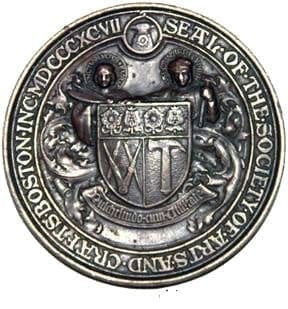
From the original charter of the Society of Arts + Crafts
It is almost a constant conversation in our community, sometimes spurred by outsiders’ curiosity, and sometimes in our own appraisal of others’ work: “What is craft?” Everyone has their own definition, overlapping like a Venn diagram of crazy proportions: Mastery of technique, or materials. Artistic merit. Utility. Tradition. Community. Individuality. And so on, endlessly.
I love these conversations, because invariably they bring up some aspect of craft that I’ve never thought of, and invariably they give me insight into the values of the person I’m talking with, and the kind of craft they appreciate. And I often wonder how the modern, self-reflective definitions of craftspeople compare to the Arts & Crafts movement at the turn of the century.
That era is fascinating, because the appreciation of craft came out of its peril in the face of industrial manufacturing, and yet was also informed by some of its techniques. A craftsperson was no longer needed to produce hand-carved furniture or hand-woven fabric, and couldn’t possibly compete with the cost of mass production – and yet, some stamp of the individual was seen as a connection to humanity that existed outside of bleak factories and wretched working conditions. The idea of craft was a portal to a more romantic existence.
The social and economic tensions of that era are, I think, mirrored by our own times. As we like to say, “In a world of sameness, craft illuminates difference.” Craft makes us feel human, and less like a cog in our giant Wheel of (Industrial) Fortune.
A few months ago I ran across the manifesto of the founders of the Society of Arts + Crafts, “The Principals of Handicraft” pictured here, and was surprised by how relevant it is today – and how it covers so many of the aspects that are mentioned in our conversations as we grapple with how we define what we do.
So at the risk of opening a can of worms, what do you think of our Founders’ definition of craft?


